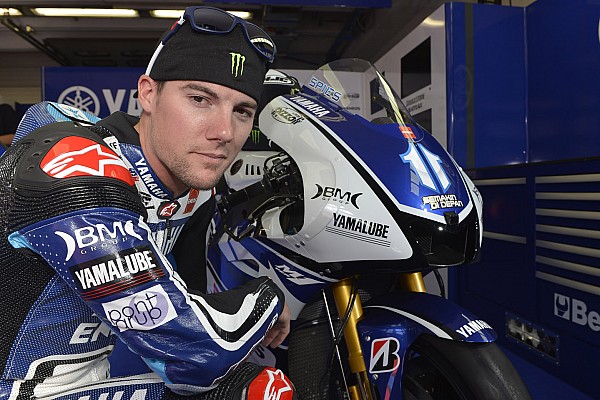
Photo by: Repsol Media
Australian Grand Prix debrief with Hirohide Hamashima
Bridgestone slick compounds available:
Front: Soft, Medium
Rear (asymmetric): Medium, Hard
The Australian Grand Prix was won, for the fifth time in succession, by local hero Casey Stoner who in doing so clinched his second World Championship title and the first for Honda in the 800cc era. The weekend started off with fine and dry weather on Phillip Island, in the Bass Straight south of Melbourne, but the temperature dropped and the wind picked up with each day until the threat of precipitation materialised on raceday. Spots of rain wetted parts of the track whilst others were in sunshine making the grip level very unpredictable, resulting in four riders crashing out of contention. The Yamaha Factory duo of Jorge Lorenzo and Ben Spies were both unable to start the Grand Prix due to injuries sustained from separate crashes, and Mapfre Aspar stand-in Damian Cudlin was also sidelined after injury.
Hirohide Hamashima – Assistant to Director, Motorsport Tyre Development Division
How much of a challenge does Phillip Island pose for tyres?
“It’s really a very tricky circuit as it’s one of extremes – it’s both relatively undemanding and the most severe circuit of the season for the tyres. The ambient temperature is usually quite cool, and even though the track temperature was very reasonable this year, the wind that comes off the ocean has a significant cooling effect on the tyres so warm-up performance is important. For the front tyres, it’s an easy circuit in terms of durability as there’s only really one area of heavy braking, but softer compounds are required to generate good grip.
“For the right shoulders of the rear tyres, the circuit is also fairly easy in terms of durability but, again, generating a good level of grip is very important and this is why we used our extra soft compound rubber this year. But the extreme comes in the form of the last two corners that demand an awful lot of the left shoulders of the rear tyres, which experience the highest tyre temperature of the year. This is the reason that we need a special construction of rear tyre for this circuit, as without the suitable level of heat resistance and durability we’d experience blistering and other ill-effects.
“Over the weekend, tyre wear was low in all respects other than the left shoulders, where it was quite high because of the temperature. Casey in particular slides the rear a lot at Phillip Island and therein lies some of his advantage, but it leads to a high rate of wear on his rear tyres. So the main challenge for us at this Grand Prix is balancing the need for a very soft right shoulder in the rear tyres with a very heat resistant left shoulder that has sufficient durability for the race without chunking or blistering. We saw signs on the rear tyres of high wear on the left side, but nothing that’s out of the ordinary or what we wouldn’t expect from Phillip Island.”
What about the laptimes during the weekend?
“Well we selected softer rear slicks for Australia this year for better warm-up performance, and we know from experience that riders will generally always prefer the softer option rear for qualifying as it provides more grip and so is faster. This weekend Casey did dip under the lap record in qualifying, using the softer rear, but there are a few factors that diluted any advantage the softer option may have provided. For a start, the circuit was much bumpier this year which did a lot to slow the riders interrupting the flow of the bike and the tyres into the corners. Also, as ever, the wind was a big factor but on race-day it was particularly strong with gusts above 50kmh, and such strong winds have a profound effect on a circuit that is so flat and open as Phillip Island. Think of it like the effect of wind across a links golf course. Overall I believe the softer compound options were a step forward as even though any laptime improvement was masked, they offered improved warm-up performance as the weather got cooler each day.”
Be part of Motorsport community
Join the conversationShare Or Save This Story
Subscribe and access Motorsport.com with your ad-blocker.
From Formula 1 to MotoGP we report straight from the paddock because we love our sport, just like you. In order to keep delivering our expert journalism, our website uses advertising. Still, we want to give you the opportunity to enjoy an ad-free and tracker-free website and to continue using your adblocker.















Top Comments